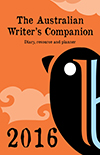

Blog
Welcome to the Busybird blog, where you can find helpful articles, updates, industry news and more. Make sure you stay up to date by signing up to our newsletter below.
Audience Assemble!
February 26, 2016 Every piece of writing has an audience. It might be a magazine’s readership, or it might just be for yourself when you vent into your diary or write up a shopping list. Words are communication. And we always choose our words and our messages depending on who is meant to receive that communication.
Every piece of writing has an audience. It might be a magazine’s readership, or it might just be for yourself when you vent into your diary or write up a shopping list. Words are communication. And we always choose our words and our messages depending on who is meant to receive that communication.
Modern marketing philosophy gears us towards writing in broad terms – using simple language and direct but detailed descriptions to attract as large a public audience as possible. Nothing wrong with that – if we write for people, then we naturally have a tendency to want as many people as possible to read our writing. Writers like Thomas Pynchon might be famous for doing the opposite, favouring density and the oblique, but who even noticed aside from critics when Pynchon’s 2013 novel came out?
But even if the trend is to broaden one’s audience as much as possible, that doesn’t mean you can ignore the need to consider who your writing is for. Everything – from the specific language you use, to the themes you include in your writing, to the type of story you’re working with – will add up. So how can you narrow down your intended audience? Here are a few nuggets that may help.
Know what your work is about.
This can be trickier than it sounds. Know why? Because sometimes, if you have a perception on what your work is about, it could be correct for the first draft but totally wrong by the final version.
I’m not just talking about story elements either. Whole new themes can pop up from revision – what was a straightforward story about a family may take on larger concerns about the nature of privacy, or the aftermath of the Australian mining boom. Or puppies.
My point is, sometimes you can have a meticulous plan from first to final draft, and even then you may not have a clear view on everything contained therein. Readers will always have their own individual perspectives, but you can always find patterns. When you get other people to read your work before publication (you are doing that, right?), don’t just drill them on what they like or didn’t like. Quiz them on what they thought the story was about. Even if you think you know the answer, you might be surprised at some responses.
Age is important – no matter what the age.
It generally only gets brought up for children’s and young adult books, but age is something to consider across the board. Yes, you need to be more specific with knowing where to position a book for anyone under the age of 18; your book’s language, themes and level of literacy has to take into account a child’s expected level of comprehension. But writing for ‘adults’ needs some targeting as well, and not just when you’re writing about a character being at a certain age.
Even general concepts like ‘privacy’ or ‘family’ often mean different things to different generations. Knowing those differences can be a big help to connecting with the readers you want as part of your audience.
Genre might be a cold, non-creative system, but you still need it.
There’s a lot of hate for genre and pigeon-holing, especially for novels that try to blend different styles or subvert genre conventions. And justifiably so. Shoving a book into a predetermined category can be misleading.
But the genre system is there to help readers sort out what they might like to read. It’s for the reader’s benefit, not the writer’s. Which makes it a blunt tool, but a useful one nonetheless. Use these descriptors to your advantage. Know what genres you’re servicing. Stepping outside of those predesignated zones might result in you alienating your potential readership – or worse, injure your chances of getting published at all.
If you choose to deliberately break genre conventions, choose wisely. Maybe you can subvert traditional fantasy by making magic only a minor influence on the story, but take out the fantastical elements entirely and you sever any connection a reader has with what they expected to read.
Self-publishing, for all its freedom, magnifies these issues.
That isn’t to say that self-publishing isn’t great for a lot of different reasons. But know what you’re getting into – not just in getting your self-published work set up (a whole topic in itself), but in figuring out how the hell you’re going to sell it.
Traditional publishing, for all its shortcomings, at least has a marketing budget (minor as it may be for anyone other than big-ticket names) and dedicated staff who can figure out the best way to publicise your book or collection. In self-publishing, you have to figure that out yourself.
Self-publishing is still an effective method for reaching an audience. But be prepared to sell it. That means knowing from day one who to sell it to.
You can say stuff it to all of this … but at your own risk.
A lot of the creative spirit comes from breaking conventions – playing with language, playing with character development, playing with one’s perceptions of an event or idea. By extension, the same can be true of the conventions that come with a writer’s audience, and the process of targeting and reaching that audience. You can disregard much or even all of the current wisdom and mechanics to find your own readership, in your own way.
But unless you really, really know what you’re doing, it’s probably going to be a bad idea. And even when you have your own plan, it’s a gambit that could break your book’s chances of success.
It may be frustrating to ‘keep the audience in mind’ when writing – it may feel like a restriction, or that it shouldn’t matter yet. But it always matters. You’re communicating, after all, even if the message hasn’t been delivered yet. Always consider who you’re communicating with.
Beau Hillier | Editor, page seventeen
The Failure of Inspiration
February 18, 2016 So you’re taking a walk, or doing the washing, or lying in bed – well, you’re doing something relatively ordinary.
So you’re taking a walk, or doing the washing, or lying in bed – well, you’re doing something relatively ordinary.
Then it hits.
Inspiration.
You have a brilliant idea for a story – an idea that excites you. The way you’d write the story fleshes out in your imagination – not all of it, but enough that you’re confident you can get started. So you sit at the keyboard, and you pound out a few thousand words. But now, your enthusiasm wanes. You try to keep at it, but within days you have nothing left. The idea can’t have been that good, after all. So you give it up, and wait for a new inspiration, the one that’ll burn all the way through writing.
Does this sound like you?
Are you even proud that you’re a thrall to inspiration, and disregard any writing done whilst not inspired as unworthy? Or ordinary? Or forced?
Thomas Edison is quoted as saying, ‘Genius is one per cent inspiration, ninety-nine per cent perspiration’.
That applies to writing also.
It’s doubtful that inspiration is going to fuel you through writing a short story, let alone a novel. There are going to be flat spots. There are going to be times you want to give it up. There are times you’re going to grow bored. Just think of any emotional, intellectual, or spiritual state which epitomises apathy – if not loathing – and, you know what? At some point, you’re going to feel it.
If you’re banking on always feeling excited by your project, you’re likely to be disappointed, and will probably only end up with a hoard of uncompleted projects, wondering why you can’t just feel passionate about something all the time, and questioning whether this is for you.
The people who finish stuff are the people who stick to it, no matter what. And the reality is as they learn to write through whatever they’re feeling – good, bad, and indifferent – they develop the endurance to always get to where they want to go. That simple. It’s a muscle. Exercise it. Build it. And it’ll start to carry you further. But it’ll remain soft and flabby if all you ever do is give up, and justify that by saying you just couldn’t remain inspired about [INSERT NAME OF LATEST PROJECT].
Inspiration’s great.
We all need it.
But perseverance will see you finish.
Time to Write
January 7, 2016And about now, most writers can be broken into any of the following categories:
- I’m going to start something new
- I’m going to finish that book I’ve been working on for XX years
- It’s time I finally wrote that book I’ve been thinking about all these years.
One of the most difficult things in starting something new (or continuing something you’ve been working on for such a long, long time) is getting to know your world. An unfamiliarity with your universe and your characters is often the reason enthusiasm flags, or writer’s block becomes an unnavigable obstacle. You might know where you’re starting, and where you want to end up, but be unsure how to get there.
It’s like driving somewhere new. You know where you’re beginning. You know where you want to end. But how do you get there? Without a map, you have no idea, and just have to feel your way. When you have a map, the journey becomes clearer. Moreover, you’re provided with alternatives as to the route.
So here’s an exercise you can copy and paste into your word processor, and which you can perform to help you get to know the story you want to write in 2016 …
| Title: |
| Subtitle (if any): |
| Genre: |
| Intended readership: |
| POV: |
| Pitch your story in one or two sentences – this will help dilute what you want to write about: |
| Where is your story set? |
| Who is your protagonist? |
| Briefly describe your protagonist … |
| Who are your other main characters? |
| Who are your supporting characters? |
| What event sets your story in motion? E.g. in The Hobbit, it’s Gandalf and the Dwarves coming to visit Bilbo. In The Philosopher’s Stone, it’s Harry finding out he’s a wizard. |
| What are the obstacles that stand in the way of a resolution? |
| What is the resolution? |
| What is the protagonist’s arc through the story? How are they changed? E.g. Bilbo goes from meek and material, to independent, confident, and worldly. |
 This is an abridged version of an exercise you can find in our Australian Writer’s Companion, which is full of weekly writing quotes, weekly writing prompts, submission opportunities, writing exercises, and writing resources! As you can see, it’s all about writing!
This is an abridged version of an exercise you can find in our Australian Writer’s Companion, which is full of weekly writing quotes, weekly writing prompts, submission opportunities, writing exercises, and writing resources! As you can see, it’s all about writing!
For now, hopefully this exercise will help show you the route you’re going to take, and in getting to know the route you’ll find the impetus to not only write, but to keep on writing in 2016.
Make this the year you finish that book!
Happy writing in 2016.
Bye 2015, Hello 2016!
December 17, 2015 This is the final Busybird blog for the year! Busybird will be closing from 5.00pm Friday, 18th December, and reopening 9.00am, Monday, 4 January 2016.
This is the final Busybird blog for the year! Busybird will be closing from 5.00pm Friday, 18th December, and reopening 9.00am, Monday, 4 January 2016.
2016.
Just like that the sun is setting on 2015, and it’s about now that we get contemplative. How did we fare this year?
At the start of any new year, we’re just about always optimistic. Even if we’re coming off a shocking year (or perhaps especially when we’re coming off a shocking year), we think, This year will be better. Or perhaps we’ve been waiting for a break in our lives, either personally or professionally. Then it’s case of, This year will be the one. Or you might have specific resolutions to quit smoking (always a popular one), to get healthier, to find love, etc., that are meant to start with the new year.
But the reality is nobody really knows how things will turn out. You can plan, you can think positively and/or constructively, you can try to action it into reality, or you can just wish it upon a falling star, but who knows what life has in store for you?
Health’s fragile, the world grows ever-more violent, and – perhaps most insidiously (although some may disagree) – our lives have become so frenetic, that we don’t always appreciate what’s right in front of us, instead focusing on what we don’t have, rather than enjoying and cherishing what we do have.
So as 2015 comes to a close, it’s great to look forward. Plan for the future. Aim high. Lift those aspirations and strive for greatness – whatever your particular greatness might be. Don’t hold back. Keep life in perspective, stay realistic, but nurture those dreams, because while some may consider them a whimsy or a luxury, dreams are our lifeblood. Without them, what is life, but just something we navigate?
Most of all, though, and arguably most important, don’t be afraid to slow down. Your life might be hectic. That might be all you know, and you might claim you just don’t know how to stop. Maybe that’s true. But that sort of frenzy is unhealthy – not only for ourselves (physically, intellectually, emotionally, and spiritually), but in regards to how it impacts every facet of our lives, whether it’s our relationships, our work, or our outlook.
Learn to pause. Force yourself to take a respite every now and then. Insist it of yourself.
And remember what matters most.
If you search deep within yourself, you’ll know what that is.
From everybody at Busybird Publishing, we wish you a Merry Christmas, and a Happy, Healthy, and Prosperous New Year.
The worst dragon
December 10, 2015 Part II
Part II
Although the Lack of Ideas Dragon might seem to be the worst of the worst, it’s not so tough. There are ways to kick this dragon back to the badlands from whence it came.
Mind maps, cluster diagrams or even roughly drawn lists will corral a wayward skein of thought and help to trace its tangles and iterations. And when the scribbles pile up, deep within the heap, I have found thoughts I didn’t even know I had. Combined with free writing, these techniques can send that winged worm packing. Even though there are shelves of books devoted to these concepts in bookstores and libraries, writing workshops are particularly useful as a pathway into this piece of secret writer’s lore.
For me, the nastiest, meanest, worst of the worst is also the most absurd. While some might know it as the Non-sequitur Dragon, I call it the Dragon of Lost Endings. This beast lurks behind every bush, hides behind the couch and nestles under the cushion. It is the tyranny of trying to rephrase and shape my thoughts into full sentences and, then, build those sentences toward a satisfying conclusion. When we speak it is often in fragments and shards that flutter around the main idea. While it might appear conversational, writing is more direct. It is a distilled form of communication that requires sentences where a subject is linked with its predicate to …?
Where was that sentence supposed to go? I have no idea. See, the dragon has struck again! I have a sense of my piece as a whole and I am clear about what I want to say, but I can’t seem to get it said in writing. Is it just a missing verb or has the entire predicate gone west? And, to make things worse, the Dragon of Transitions and the Dragon of Flow are the squirming, puling children of this monster with multiple heads and way too many faces.
In the past I have tried to separate the processes, to distinguish between the writing phase where I pour ideas onto the page, make loose associations and puff up the volume of words and the revision/editing stage where the prose is cut, polished, and styled. Until recently, grammar, sentence construction and word choice were banned from my early drafts. But I often find once I have gathered my content, I am left with a tangled thicket of words that I cannot find a way to articulate, and it is precisely then that the Dragon of Lost Endings swoops in and blasts it all to kingdom come.
So, against the current thinking, I am going to turn around and confront the beast, person to chimera, using wordplay as a warm-up strategy. For me, ideas can be deeply connected to the words in which they are uttered. As a preparation for my encounter, I am going to delve into the dark mysteries of grammar. No more will nominative absolutes, gerunds and complex compound sentences be a foreign language.
Another way I like to foil this beast is to lead it astray. Instead of slaving over my keyboard desperately searching for endings, I leave the dragon to prowl while I take my notebook for a walk, go out for a coffee or enrol in a writing workshop. My theory is that dragons do not like to do their dirty work in public.
The writing warm-up is another tactic with dragon-taming potential. Before I start my real writing, I begin by closely observing the things around me and noting how I feel in a separate journal. I listen to my senses and write about the things that make me want to write. The space outside or around the writing not only reveals the text from different angles and brings its subtle tonalities to light but it also offers another way to sneak up on the writing from a place where few dragons dwell.
A number of writers recommend warm-up strategies, including the mystery writer Sue Grafton and Melbourne poet Kevin Brophy, but I first came across the idea in a flash fiction workshop with Blaise.
[Editor’s note: This almost feels like a fragment, like there was something that’s been chopped.] You know what’s happened don’t you …? I’ve lost my ending.
Lisa Roberts
– Assistant Editor


